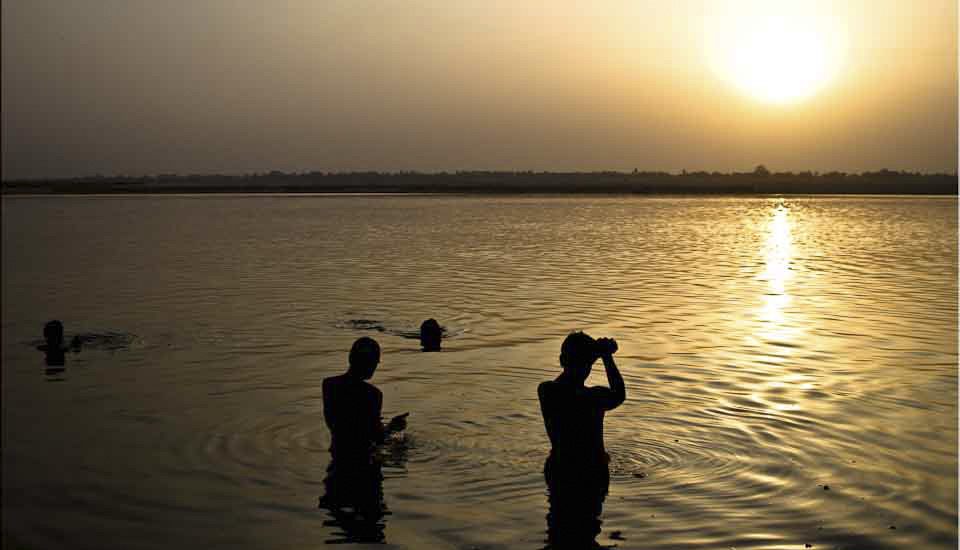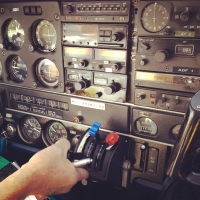.jpg)
Melpa Men
The tribal people of Papua New Guinea all have distinctive costumes, makeup, and artifacts, which they happily display at cultural festivals, or sing-sings.
In communities without a written language, culture is passed down through the oral traditions of art, story-telling, music, and dance. Even architecture and weaponry can signify meaning.
In Papua New Guinea, there are more than more than 850 discrete spoken languages, and until recently, none of them were written down. Even today, adult literacy sits at less than 62%. In a historically nonliterate society with more than 7000 diverse cultural groups, one of the most popular means of education has been through costume, song, and dance.
Different occasions are commemorated or celebrated through their own ritualised expressions of song, dance, feasting and/or gift-giving. All across Papua New Guinea, locally-specific dances have particular meanings: some are a way to welcome visitors, others celebrate a good hunt or victory in war. Others still tell legendary stories, with each step, twist, and jump embodying its own significance and value.
Some of these dances are shared with neighbouring tribes and with visiting outsiders at sing-sings, gatherings of tribes or villages that showcase local dance, costume and music.
I was travelling with photographer Karl Grobl from Jim Cline Photo Tours. Our small group was attending the Paiya Village Mini Cultural Show, which takes place annually in the Western Highlands of Papua New Guinea, just before the better-known and larger Mount Hagen Show. The beauty of this smaller show is the access that visitors have to the different tribal groups as they decorate their bodies and faces with paint and mud, leaves and feathers (see: Mirror, Mirror!).
In addition to the men’s victory dances that are commonly performed at the bigger festivals, we also got to see some of the more story-telling dances: depicting courtship; demonstrating traditional fighting using bows and arrows or axes and shields; and explaining the negotiation of traditional marriage exchanges of bride-price in pigs, money, and shells.
Best of all, we were also treated to a traditional mumu: a feast of pork, chicken and a variety of fruit and vegetables wrapped in banana leaves and roasted in a ground oven of hot stones.
Join me for an afternoon at the sing-sing.
.jpg)
Face in the Mirror
Arriving at the festival venue early gave us a great opportunity to watch the many layers of face-paint take shape.
.jpg)
Helping Each Other
In the steaming hot jungle, small tribal groups are helping each other get ready for their fesival performance.

Father-Daughter Duo
Not everyone is here to perform: many of the people who live in this village have come to watch the preparations, just as we have.

Jiwaka and Engan Dancers
Once the festival opens, there is a cacophony of drums and voices, as different tribal groups work their way onto the grass grounds.

Huli Wigmen Dancing
One of the more distinctive groups, in costume and in dance style, is that of the Huli Wigmen. With luxuriant bird of paradise feathers decorating their hats woven from human hair, the face-painted men bang their drums, chant, and bounce up and dawn as if they had springs in their feet.

Introducing the Program
This Jiwaka warrior’s bila – or headdress – was an extraordinary confection of feathers, fur, and felt. Over the PA system, he introduced his group; I couldn’t understand a word!

Jiwaka Dancers
Jiwaka Province neighbours the Western Highlands Province, and only split away from it in 2012. The division was because of cultural differences and complicated clan affiliations; …

Western Highland Women
… even so, there are a lot of similarities between the groups.

Western Highland Women Singing
They all love their feathered headdresses, their face paint, their shells, …

Western Highland Women Drumming
… and their small kundu drums. Another theme across many of the groups is the ritual moka kina, a necklace or pectoral ornament made from shell, ochre and resin, and symbolising wealth and bride-price.

Melpa Woman – Western Highlands

Asaro Mudmen
The Asaro Mudmen are truly unique – even though they have become rather well known recently through travel campaigns.

Mudmen Masks
Traditionally, the Mudmen live near Goroka in the Eastern Highlands Province. The masks are hot and heavy, and the men take them off at the first opportunity.

Mudman on the Mike
One of the men tells the costume-origin story. Fortunately, I had heard it before (see: Asaro Mudmen), as I found the PA hard to understand.

Boney Hands
Another unique group, the Skeleton Men come from Chimbu Province, in the Central Highlands.

Skeleton Man
Moving like zombies with their eyes shut, they perform a silent story-dance that tells a tale of brave hunters who rescued their children from a ghost and conducted a magic spell to scare it away.

Skeleton Men
Some days earlier, I had watched a group of these men go through their lengthy process of body painting (see: Bugamo Skeleton Men).

Jiwaka Dancer
There are more feathered headdresses here than at a burlesque dance show!

Melpa in Blackface
The Western Highland headdresses take a variety of forms: the most basic is a head net, wrapped around the wearer’s head, but for special events, fabulous wigs supported by bamboo frames can be made from hair or seed burrs.

Western Highland Men
The configuration of the headdress, and the rest of the costume, is determined by the tribe, and the event being celebrated. They are all wearing their moka kina breast plates.

Preparing the Mumu
The performers take a break so we can admire the work that has gone into preparing our mumu – earth-oven lunch.

Grandma and Bub
I am not the only one anxiously waiting for my food!

Lunch is Ready!

Western Highland Warrior with his Axe
After lunch, we are treated to complex tales of bride kidnapping, pig theft, and inter-tribal warfare.

Highland Warriors in a Melee
As well as stone axes, the men use wooden arrows and spears …

After The Battle
… and protect themselves with heavy wooden shields.

Pronouncements of a Tribal Elder
After skirmishes and negotiations, a bride price is agreed between villages.

Groom’s Group
The groom looks forward to his bride, …

The Bride
… the bride is smiling, …

Chief with a Moka Kina Shield
… and the pigs and moka kina shields are exchanged.
On the surface, it sounds transactional, but the moka was/is an exchange system wherein the donor gives shells and pigs as outright gifts. Reciprocity means that the recipient is later obligated to give a larger amount back. In this way, the exchange of wealth builds friendships and cements alliances.
 The younger generation is faced with the competing demands of tradition and the modern and changing world. Participation in cultural dance performances can instil pride in the old ways, and help bridge the gap to the new.
The younger generation is faced with the competing demands of tradition and the modern and changing world. Participation in cultural dance performances can instil pride in the old ways, and help bridge the gap to the new.
Here’s hoping!
Pictures: 18August2017




































.png)


Hi There,
do you have some Pictures for Tigi plantation in Dei district WHP,
Tigi coffee plantation pictures in 1980s
could you have than share with me and I wanted to have a look at it
Very sorry, Lewis! I can’t help you.